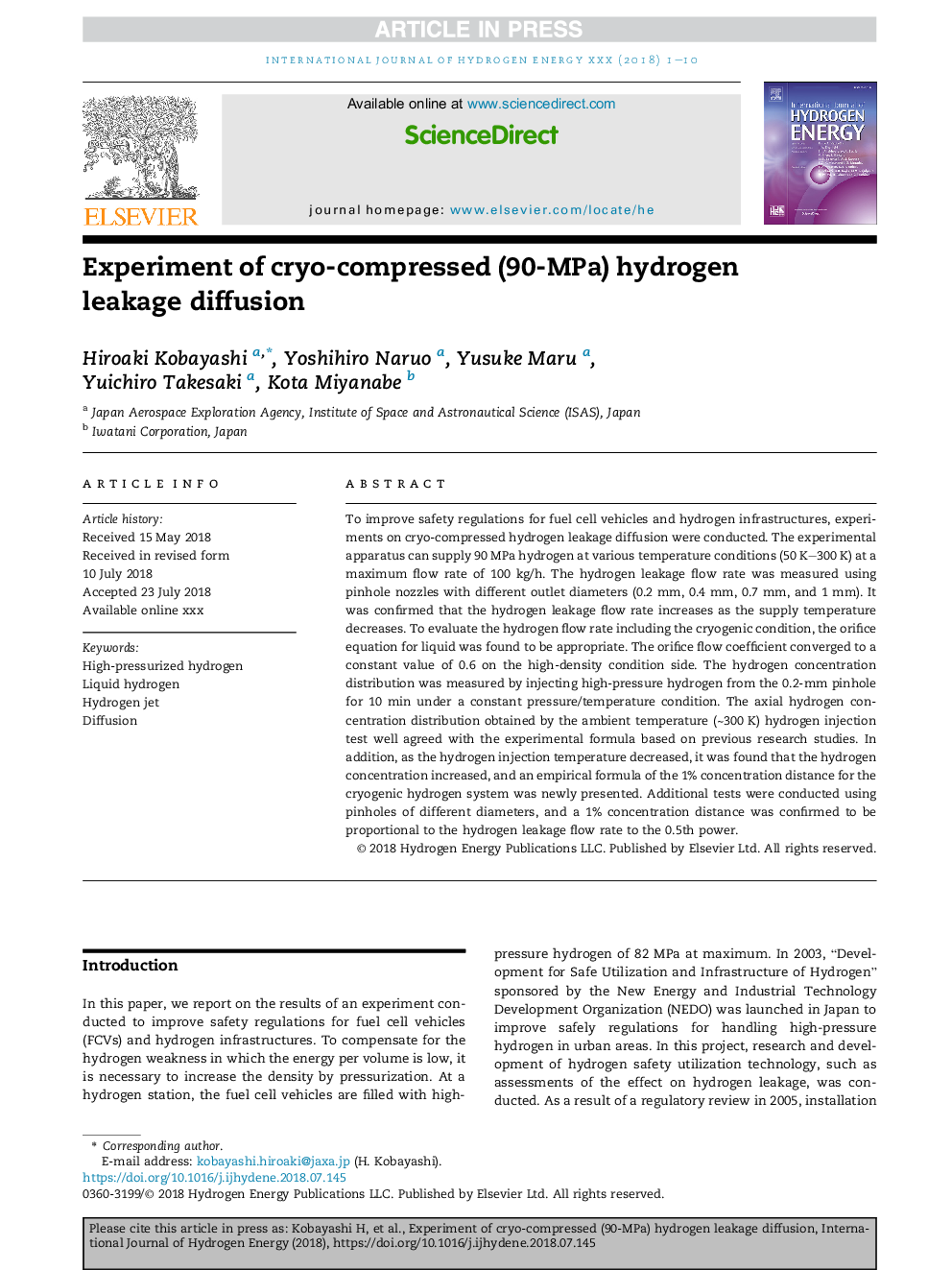| Article ID | Journal | Published Year | Pages | File Type |
|---|---|---|---|---|
| 8954960 | International Journal of Hydrogen Energy | 2018 | 10 Pages |
Abstract
To improve safety regulations for fuel cell vehicles and hydrogen infrastructures, experiments on cryo-compressed hydrogen leakage diffusion were conducted. The experimental apparatus can supply 90Â MPa hydrogen at various temperature conditions (50Â K-300Â K) at a maximum flow rate of 100Â kg/h. The hydrogen leakage flow rate was measured using pinhole nozzles with different outlet diameters (0.2Â mm, 0.4Â mm, 0.7Â mm, and 1Â mm). It was confirmed that the hydrogen leakage flow rate increases as the supply temperature decreases. To evaluate the hydrogen flow rate including the cryogenic condition, the orifice equation for liquid was found to be appropriate. The orifice flow coefficient converged to a constant value of 0.6 on the high-density condition side. The hydrogen concentration distribution was measured by injecting high-pressure hydrogen from the 0.2-mm pinhole for 10Â min under a constant pressure/temperature condition. The axial hydrogen concentration distribution obtained by the ambient temperature (â¼300Â K) hydrogen injection test well agreed with the experimental formula based on previous research studies. In addition, as the hydrogen injection temperature decreased, it was found that the hydrogen concentration increased, and an empirical formula of the 1% concentration distance for the cryogenic hydrogen system was newly presented. Additional tests were conducted using pinholes of different diameters, and a 1% concentration distance was confirmed to be proportional to the hydrogen leakage flow rate to the 0.5th power.
Keywords
Related Topics
Physical Sciences and Engineering
Chemistry
Electrochemistry
Authors
Hiroaki Kobayashi, Yoshihiro Naruo, Yusuke Maru, Yuichiro Takesaki, Kota Miyanabe,
